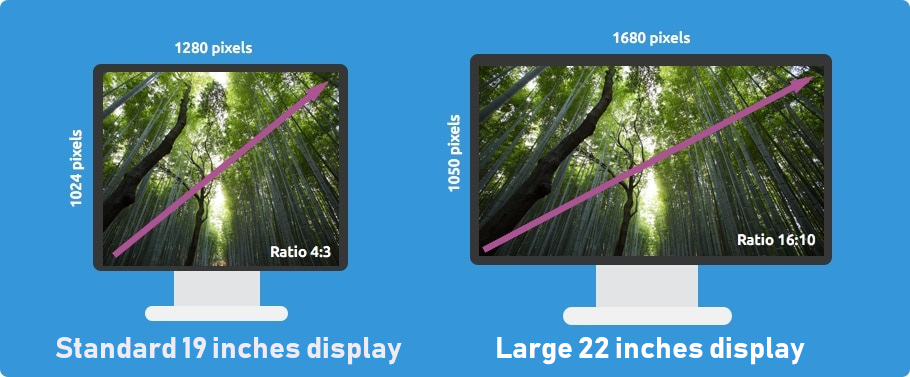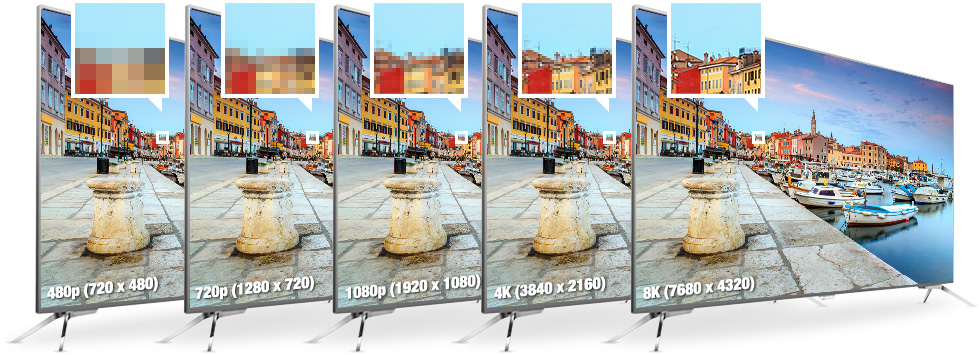
To make the best screen choice, you need to understand resolutions, the standards and abbreviations currently used.
In order to understand screen resolution, we need to start by describing a pixel. As they are very small, LCD sreens can have millions of these. Each one is composed of three RGB (Red, Green, Blue) LED. The combination of these three primary colours allows to create a large amount of shades.

Each pixel receives three coded instructions (one for each primary colour) in order to form a colour. Its depth will depend on the used encoding.
A display native resolution is defined by the number of pixels.
Written as : Number of horizontal pixels x Number of vertical pixels.

The example above shows two screens of 1280x1024 pixels and 1680x1050 pixels of native resolution.
The screen size in inches is the length of its diagonal (1 inch = 25,4mm).
The screen ratio is equal to the length of the screen divided by it's height.
In the previous example, the first screen has a ratio of 1280/1024 = 1,25 = 4/3, the second one : 1680/1050 = 1,6 = 16/10.

There are many screen ratios availables but the most currently used are the 4:3, 16:9 and 16:10.
Standards abbreviations are often used to talk about a screen resolution or ratio.


Above, for the same diagonal length, various resolutions are showed. The higher the resolution is, the higher the pixel density is and so the better the image precision and realism will be.
There are three main features to consider while choosing a screen.
Firstly a low native resolution doesn't always mean a poor image quality, it depends on the diagonal length of the screen. Also, on a very wide screen, a high native resolution doesn't always ensure a precise image. Native resolution and screen size are inseparable.
Then, the ratio will depend of the use of the display. For television, monitors 16:9 or 16:9 are preferred. In industrial monitoring or security applications, the 4:3 is more popular.
>> Discover our display ranges for severe, industrial or military environments
Need help ?
We'll call you at the date and hour of your choice to answer your question